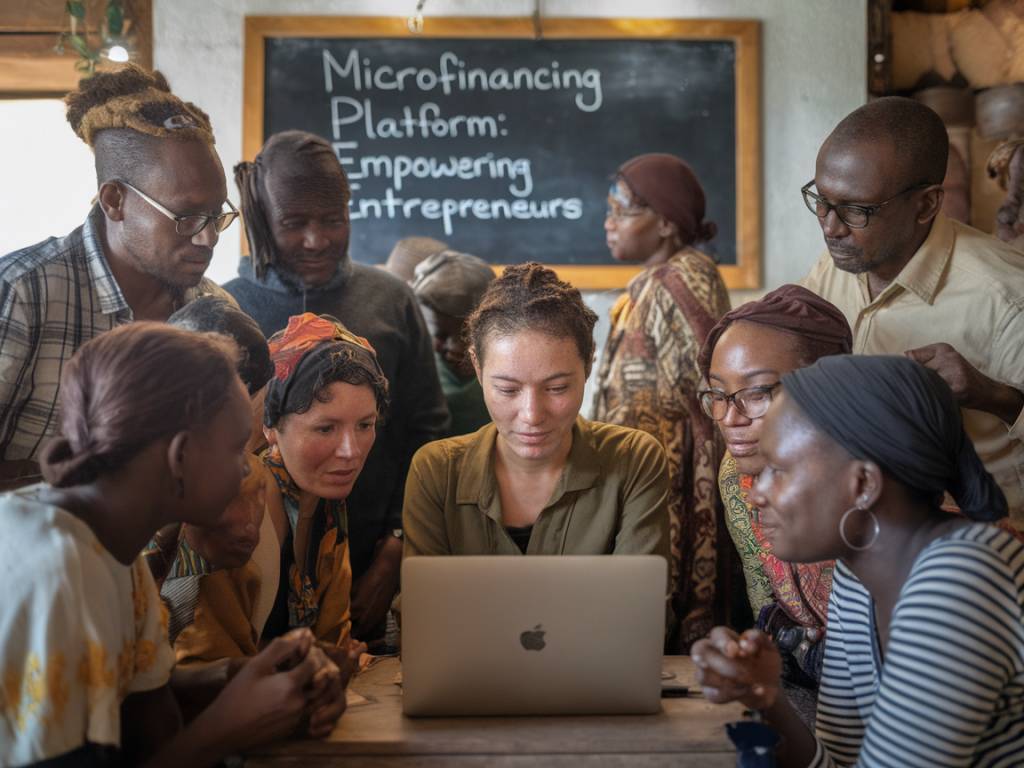the benefits of microfinancing for local entrepreneurs
Microfinancing, a financial service provided to low-income individuals or groups who traditionally lack access to conventional banking, has become a catalyst for local entrepreneurs worldwide. This article delves into the multifaceted benefits of microfinancing for local entrepreneurs, offering practical advice, concrete examples, and relevant case studies to illustrate its impact. Additionally, I’ll share actionable recommendations for those considering microfinancing as a viable option to boost their entrepreneurial ventures.
Empowering Financial Inclusion
One of the primary benefits of microfinancing is promoting financial inclusion. Conventional banks often require collateral and have stringent approval processes, which can exclude small-scale entrepreneurs, especially in developing regions. Microfinance institutions (MFIs) step in to fill this gap by offering accessible financial services.
An illustrative example is the Grameen Bank in Bangladesh, founded by Muhammad Yunus. This institution provides small loans to impoverished entrepreneurs with no collateral requirements. Through microfinancing, many individuals, especially women, have been able to start businesses, supporting their families and communities.
Boosting Economic Development
Microfinancing can significantly contribute to local economic development. By providing capital to entrepreneurs who would otherwise be excluded from the financial system, it enables the creation of jobs and stimulates economic activities.
According to a study by the Consultative Group to Assist the Poor (CGAP), microfinance has been instrumental in lifting over 200 million people out of poverty. These entrepreneurs, in turn, contribute to their local economies by generating employment and investing in their communities. For instance, in India, the microfinance sector has created over 1 million direct jobs, showcasing its potential to drive economic growth.
Supporting Entrepreneurship and Innovation
Access to microfinancing encourages entrepreneurship and innovation. When entrepreneurs have access to financial resources, they can experiment with new business ideas and bring forth innovative products and services. This is particularly crucial in regions where traditional economic activities dominate, and new business models can lead to diversification and resilience.
A real-life example is the case of Sanergy, a social enterprise in Kenya that provides affordable and sustainable sanitation solutions. Initially funded through microfinancing, Sanergy has innovated its way to address Kenya’s sanitation challenges by creating a franchise of small-scale, low-cost sanitation centers. This innovation has not only improved public health but also provided entrepreneurship opportunities to local residents who manage these centers.
Enhancing Social Capital
The impact of microfinancing goes beyond economic benefits; it also enhances social capital within communities. Borrowers often become part of a microfinance group or a collective, fostering a sense of community and mutual support. These groups provide a platform for knowledge sharing, collaboration, and collective problem-solving.
For example, in Uganda, the Village Savings and Loan Associations (VSLAs) play a crucial role in community cohesion. These associations are self-managed and use member savings to provide loans to each other. The social interactions within these groups enhance trust, relationship-building, and shared learning. Many participants have reported improved collective decision-making skills and greater community engagement.
Providing Financial Literacy and Business Training
Many MFIs offer more than just loans; they also provide financial literacy and business training. This holistic approach equips entrepreneurs with the skills needed to manage their finances effectively and grow their businesses sustainably. Topics often covered include budgeting, savings, bookkeeping, and marketing strategies.
A study by the International Finance Corporation (IFC) highlighted that combining financial services with training led to better business outcomes. In Peru, for instance, micro-entrepreneurs who received training alongside loans showed a 20% higher business growth rate compared to those who only received loans. This demonstrates the importance of coupling financial support with capacity-building initiatives.
Mitigating Risks through Group Lending
Microfinancing often employs group lending mechanisms to mitigate risks. In this model, a group of borrowers is jointly responsible for the repayment of each individual’s loan. This creates a social pressure to repay and reduces the risk for the lender.
For example, in the Philippines, the Center for Agriculture and Rural Development (CARD) uses the group lending approach effectively. Borrowers form groups of five, and each member is encouraged to ensure the others repay. This method not only reduces default rates but also fosters a support network among the entrepreneurs.
Breaking the Cycle of Poverty
Microfinancing can break the cycle of poverty by providing low-income individuals with an opportunity to improve their livelihoods. With access to financial services, people can invest in their businesses, generate income, save for the future, and access education and healthcare.
One notable case is that of BRAC, a development organization in Bangladesh. BRAC’s microfinance program has helped millions of people transition out of poverty by providing them with the means to start and grow businesses. Participants in BRAC’s program have reported significant improvements in their financial status, quality of life, and educational attainment for their children.
Increasing Gender Equality
Microfinancing can have a profound impact on gender equality by empowering women economically. In many countries, women face considerable barriers to accessing finance due to cultural norms and legal constraints. Microfinance institutions often target women, recognizing that empowering them can lead to broader social and economic benefits.
The Self Employed Women’s Association (SEWA) in India provides a striking example. SEWA focuses on providing financial services to women, helping them start and expand their enterprises. As a result, these women gain financial independence, improved social status, and better negotiation power within their households and communities. Additionally, their businesses create employment and contribute to local economies.
Recommendations for Local Entrepreneurs
For local entrepreneurs considering microfinancing, here are some actionable recommendations:
- Thoroughly Research Microfinance Institutions: Investigate various MFIs to understand their terms, interest rates, and additional services like training and support.
- Join a Microfinance Group: If possible, join a microfinance group or community to benefit from shared experiences, networking, and collective problem-solving.
- Prepare a Solid Business Plan: Develop a clear and detailed business plan to demonstrate your venture’s potential and viability. This can also guide your business operations and growth strategies.
- Take Advantage of Training Programs: Participate in any available financial literacy or business management training offered by the MFI. These programs can enhance your skills and increase your chances of business success.
- Keep Accurate Financial Records: Maintain precise and up-to-date financial records to monitor your business performance and manage repayments effectively.
- Build a Support Network: Engage with other local entrepreneurs and organizations to build a network of support, advice, and encouragement.
By following these recommendations, local entrepreneurs can maximize the benefits of microfinancing, paving the way for business growth, community development, and personal empowerment. With the right approach, microfinancing can be a powerful tool for transforming lives and fostering inclusive economic progress.



